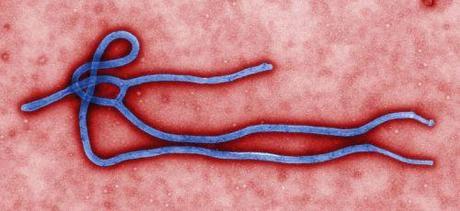Do you have COPD, or pneumonia, or bronchitis?
Those are all respiratory illnesses.
If so, then you can be apprehended and detained against your will by a new amendment Obama Ebola just added to an executive order.
Paul Joseph Watson reports for InfoWars, Aug. 1, 2014, the amendment “Revised List of Quarantinable Communicable Diseases” allowing for the “apprehension, detention, or conditional release of individuals to prevent the introduction, transmission, or spread of suspected communicable diseases” was added to Executive Order 13295, which was passed by George W. Bush in April 2003.
The amendment signed by Obama replaces subsection (b) of the original Bush executive order which referred only to SARS. Obama’s amendment allows for the detention of Americans who display “Severe acute respiratory syndromes, which are diseases that are associated with fever and signs and symptoms of pneumonia or other respiratory illness, are capable of being transmitted from person to person, and that either are causing, or have the potential to cause, a pandemic, or, upon infection, are highly likely to cause mortality or serious morbidity if not properly controlled.”
 The deadly Ebola virus
The deadly Ebola virus
The amendment clearly is a response to the Ebola epidemic that has jumped from West Africa’s jungles to its urban centers and is now deemed “out of control” by the UN’s World Health Organization.
That prompted a Department of Defense announcement in April that it had deployed biological diagnostic systems to National Guard support teams across the U.S. in readiness for any potential Ebola outbreak.
At the same time, someone made the questionable decision to import into the United States two Americans stricken with Ebola for treatment at Emory University Hospital in Atlanta, Georgia.
Yesterday, Dr. Kent Brantly, the American doctor who contracted Ebola while treating patients in West Africa, landed at Dobbins Air Reserve Base in Marietta, Georgia — the first ever case of Ebola on US soil. He was escorted to Emory Hospital under police escort. His colleague Nancy Writebol arrived later on a separate flight as the planes are equipped to deal with one quarantined patient at a time.
Brantly and Writebol are among more than 100 health workers fighting Ebola in West Africa who have contracted it themselves.
The federal government’s Centers for Disease Control and Prevention (CDC) goes even further than the new amendment to Executive Order No. 13295. On the official CDC website are “Specific Laws and Regulations Governing the Control of Communicable Diseases” specifying that seemingly healthy citizens who show no symptoms of Ebola can be forcibly quarantined at the behest of medical authorities:
“Quarantine is used to separate and restrict the movement of well persons who may have been exposed to a communicable disease to see if they become ill. These people may have been exposed to a disease and do not know it, or they may have the disease but do not show symptoms.”
This is because an individual infected by the Ebola virus can be asymptomatic for as long as 21 days.
Ebola is one of the world’s deadliest viruses with a high fatality rate of 60 to as high as 90%. There is no vaccine. No cure.
First identified in 1976 in the sub-Saharan jungles of Zaire and the Sudan, Ebola was transmitted to humans via the blood or bodily fluids of an infected fruit bat or monkey.
Symptoms typical of an Ebola infection begin 2 to 21 days after contacting the virus — those of fever, throat and muscle pains, and headaches. Then it gets worse, with nausea, vomiting, diarrhea, and decreased functioning of the liver and kidneys. Then it gets even worse. The infected starts hemorrhaging or bleeding from the body’s mucous membranes — mouth (gums), nose, gastrointestinal tract, and vagina.
Human-to-human transmission occurs via direct contact with blood or bodily fluids (from diarrhea or vomiting) from an infected person, or by contact with contaminated medical equipment such as needles. Since the virus continues to live inside a dead person, transmission can also occur via embalming an infected dead person. Men who survive may be able to transmit the disease sexually via sperm for nearly 2 months.
In late 2012, Canadian scientists discovered that the deadliest form of the virus could be transmitted by air between species, from pigs to monkeys without any direct contact between them, leading to fears that airborne transmission could be contributing to the wider spread of the disease in parts of Africa.
Some scientists believe that the Plague of Athens, which wiped out about a third of its inhabitants during the Peloponnesian War (431-404 B.C.), may have been caused by Ebola. (NBC News)
More draconian than Executive Order No. 13295 and the CDC’s forced quarantine of individuals suspected of but who show no outward signs of having Ebola is the Model State Emergency Health Powers Act (MSEHPA) that gives public health authorities and governors expanded police powers to seize control of communications devices, public and private property, as well as a host of other draconian measures in the event of a public health emergency.
When MSEHPA was introduced, the Association of American Physicians and Surgeons had warned that it “could turn governors into dictators.”
Final thought:
Don’t you think it’s interesting that, despite HIV/AIDS being a terrible communicable disease that has taken the lives of 36 million in the United States and across the world, neither Executive Order No. 13295, nor the CDC’s forced quarantine of individuals, nor the Model State Emergency Health Powers Act was ever deployed against this true pandemic?
H/t FOTM’s CSM
~Eowyn

